11.1 Exploring Themes of Love, Romance, and Betrayal
The classic short stories of Guy de Maupassant (1850-1893) take the reader on a journey that explores gender roles and role captivity in the 19th century. Do Maupassant’s characters find “true love” or do they see “romance” with a more cynical view? Essential questions can be integrated within each lesson and the treatment of the theme of love can be studied from a comparative angle across different authors, time periods, and cultures. These questions can be a catalyst to meaningful discussions. Are there pragmatic reasons for marriage that are not based on mutual love and respect? How “successful” might such arrangements be? What has stayed the same in terms of the way individuals view romantic love today? Why is true love so elusive? What causes individuals to become estranged in a relationship? To what extent is meeting “the right person” a random twist of fate? What makes people fall in love? What are the different faces of love? Is love necessary for a “happy” life? Is there a fine line between love and madness? How are related qualities such as loyalty, respect, and trust at the heart of successful relationships? To what extent are these values undermined in a culture where superficial and fleeting qualities are valued more?
Guy de Maupassant’s naturalistic style of writing lends itself to the realism of his characters and their conflicts; he presents keen psychological insights into the motivations of individuals. In his stories, he highlights the hypocrisy, vanity, and shallowness that he observed in 19th Century French society. Similarly, in Anton Chekhov’s (1899) “The Lady with the Pet Dog” the characters move between two worlds and two lives, a conventional one “full of conventional truth and conventional falsehood, exactly like the lives of his friends and acquaintances” (p.168), and their extramarital affair which they keep secret. The main character Gurov is a world-weary adventurer who at first sees Anna as another conquest. The stakes become higher when he falls in love with her. Anna escapes a loveless marriage but her feelings toward Gurov become more conflicted as she learns of his deception. Like Chekhov, Katherine Mansfield has an ironic view of life and love, stories like “Bliss” portray the troubled relationships between men and women. The carefree happiness that Bertha displays as she prepares for her dinner party contrast with the spiralling change of her emotions as she realizes that her husband has betrayed her. In “Miss Brill” Mansfield comments on the petty cruelty of individuals who lack empathy and compassion for those who are different or marginalized in some way by society.
In contrast to both Maupassant and Chekhov, O. Henry’s stories of love are more optimistic and the characters are poor materially yet rich emotionally and spiritually. Della and Jim are devoted to each other in “The Gift of the Magi” (1905) and the characters in “Transients of Arcadia” are swept away with the wealth, romance and adventure that embody turn of the century New York. O. Henry’s stories also reflect the dynamism of turn of the century New York, a time of rapid change, social mobility, industrial growth, and immigration to the “new world”; it was a time fortunes were made and the idea of attaining wealth and a glamorous lifestyle were sought. O. Henry raises questions about spiritual and emotional values at a time when these were secondary to materialistic gain. “Transients in Arcadia” story centres on the themes of identity, escape, honesty, values, and trust. Both Madame Beaumont and Mr. Farrington create personas of wealthy and aristocratic “society” people. They are spending a week in the luxury New York City Hotel Lotus in search of a lifestyle that contrasts with the daily drudgery of their own lives. It is only toward the end of the story when the characters reveal their true identities and life situations that a relationship of respect and trust emerges. Learners can create dramatic scripts from the short stories, perform a Reader’s Theatre version of the story, and create a visual chronology of the storyline and a visual representation of the story’s overall themes. The short stories by F. Scott Fitzgerald probe the precarious and conflicted lifestyles of the wealthy or those seeking wealth and the “bright lights” that are associated with fame and upward social mobility. The stories that these writers created continue to resonate with readers today.
Teachers exploring texts such as William Shakespeare’s Twelfth Night, A Doll’s House (Ibsen) Wuthering Heights (Emily Bronte), Jane Eyre (Charlotte Bronte), The House of Mirth (Wharton), and F. Scott Fitzgerald’s The Great Gatsby all involve characters who encounter inner conflicts that challenge them to search for the meaning of love. By reading stories where relationships and the facets of love are dominant themes, learners have opportunities to explore their own insights and interpretations of love within the context of their own lives. An artistic essay or the way women are represented throughout the centuries could encourage a critical examination of “role captivity” and the way both men and women were pressured to conform to societal expectations. Learners could create a photo-essay or they could write about 19th century artistic depictions of women. What pressures do individuals face today as they navigate romance and relationships in an age that increasingly is dominated by social media? Links to a bibliography of the complete short stories as well as lesson and unit plan ideas are listed at the end of this chapter.
Love, Loyalty, and Betrayal
“How little it takes to doom you or to save you” meditates Madame Loisel at the end of Maupassant’s classic short story “The Diamond Necklace” (1884). The French writer Guy de Maupassant wrote over 300 short stories in his lifetime. His short stories challenge readers to explore the different facets not only of love but of self-deception, loyalty, and betrayal. His stories include drama, dialogue, and riveting plot twists with surprise endings. Some of his stories have a cynical view of relationships between men and women; in essence, they are more like business relationships that have at their heart a transactional dynamic where the partners agree to “unspoken” rules that define their relationships.
Deception and disappointment are themes that recur in de Maupassant’s works. Madame Loisel dreams of expensive clothes, nights at the opera, and fancy dinners in splendid chambers. Her fate takes a transformative turn when she loses the “diamond” necklace her friend lends her. Appearance and reality clash in ironic ways in the De Maupassant world. In “The Jewels” (1884) Monsieur Lantin is devastated when he learns that his seemingly virtuous wife had betrayed him by being unfaithful. Her “costume” jewels seem to symbolize the deception and material values that his late wife held dear. Some of the stories have an almost magical fairy tale like quality. These classic stories have long held readers’ interests. The short stories of Maupassant can be compared to those by Kate Chopin, another well-known 19th century writers. Both de Maupassant and Chopin were keen observers of the rigid rules and roles of societal expectations. At times, marriage seems more like a trap. Mrs. Mallard in Kate Chopin’s “The Story of an Hour” feels a sense of freedom when she learns that her husband died accidentally.
Additional Resources
Elements of Fiction:
- To read and review the Elements of Fiction please open the link here and here.
- To learn more about great short stories please open the link here.
- Literary Genres
- Literary Landscapes
Art and Literature Project Ideas
By integrating visual art to complement the reading and analysis of the stories, multi-modal literacy skills can be developed. Students can research online art museums to create their own illustrated versions of popular classic and contemporary love stories. How are women represented in paintings? How might this appraisal impact self-image and personality? Are there contemporary parallels with the way women are portrayed in film, media, and art today? How are women artists, for example, portraying other women? Is there a difference between the ways female artists portray women compared to male artists? What in your view needs to change so that there might be better representation of experiences and voices of diverse women? By encouraging art appreciation and creative writing, students can extend their knowledge about gender, social roles, society, role captivity, and women’s empowerment.
Selected Texts and Art Images for “The Diamond Necklace” by Guy de Maupassant (1884)
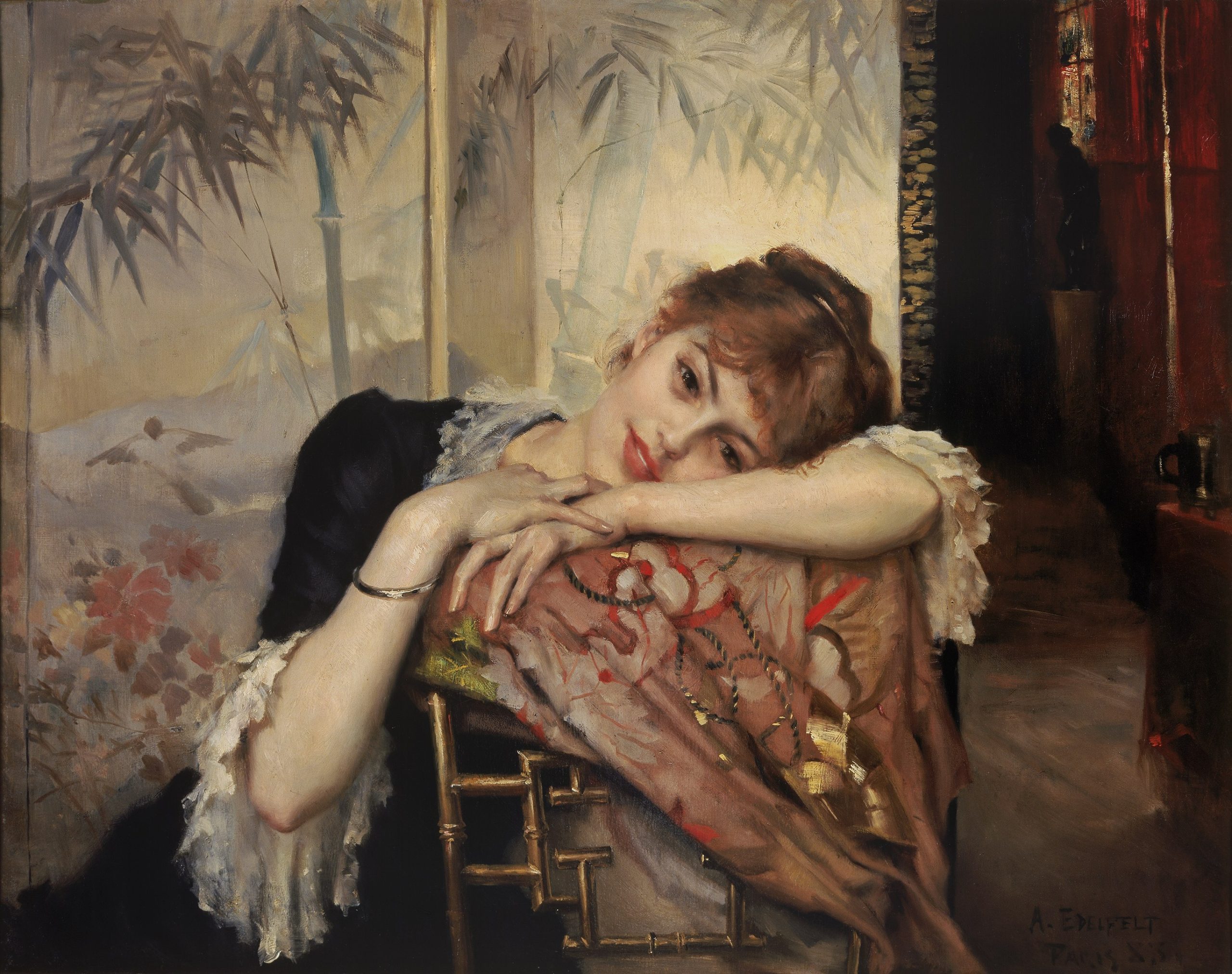
Courtesy: By Albert Edelfelt – https://www.smk.dk/en/exhibition/japanomania-in-the-north-1875-1918/, https://www.smk.dk/en/article/publication-japanomania-in-the-nordic-countries/, Public Domain, https://commons.wikimedia.org/w/index.php?curid=92706620
Excerpt from “The Diamond Necklace” by Guy de Maupassant
She was one of those pretty and charming girls who, as if through some blunder of fate, are born into a family of pen pushers. She had no dowry, no prospects, no possibility of becoming known, appreciated, and loved, of finding a wealthy and distinguished husband. And so, she settled for a petty clerk in the Ministry of Education.
Unable to adorn herself, she remained simple, but as miserable as if she’d come down in the world. For women have no caste or breed; their beauty, their grace, and their charm serve in lieu of birth and family background. Their native finesse, their instinct for elegance, their versatile minds are their sole hierarchy, making shop girls the equals of the grandest ladies.
She suffered endlessly, feeling that she was meant for all delicacies and all luxuries. She suffered from the poverty of her apartment, the dinginess of the walls, the shabbiness of the chairs, the ugliness of the fabrics. All these things, which wouldn’t have even been noticed by any other woman of her station, tortured her and infuriated her. (De Maupassant, 1884).
To read the complete story “The Necklace” by Guy de Maupassant please open the link here.
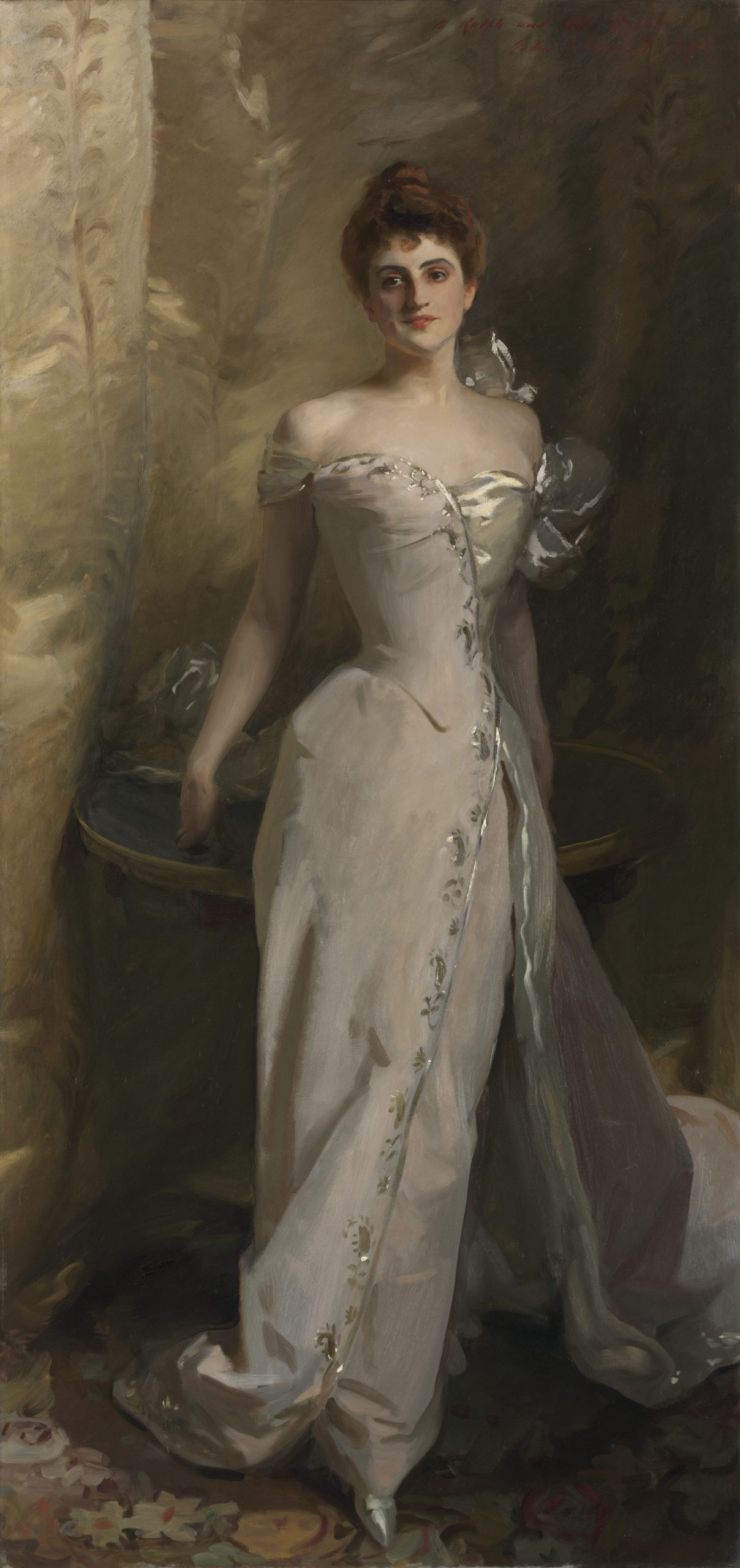
Courtesy: By John Singer Sargent – https://clevelandart.org/art/1998.168, Public Domain, https://commons.wikimedia.org/w/index.php?curid=76002647
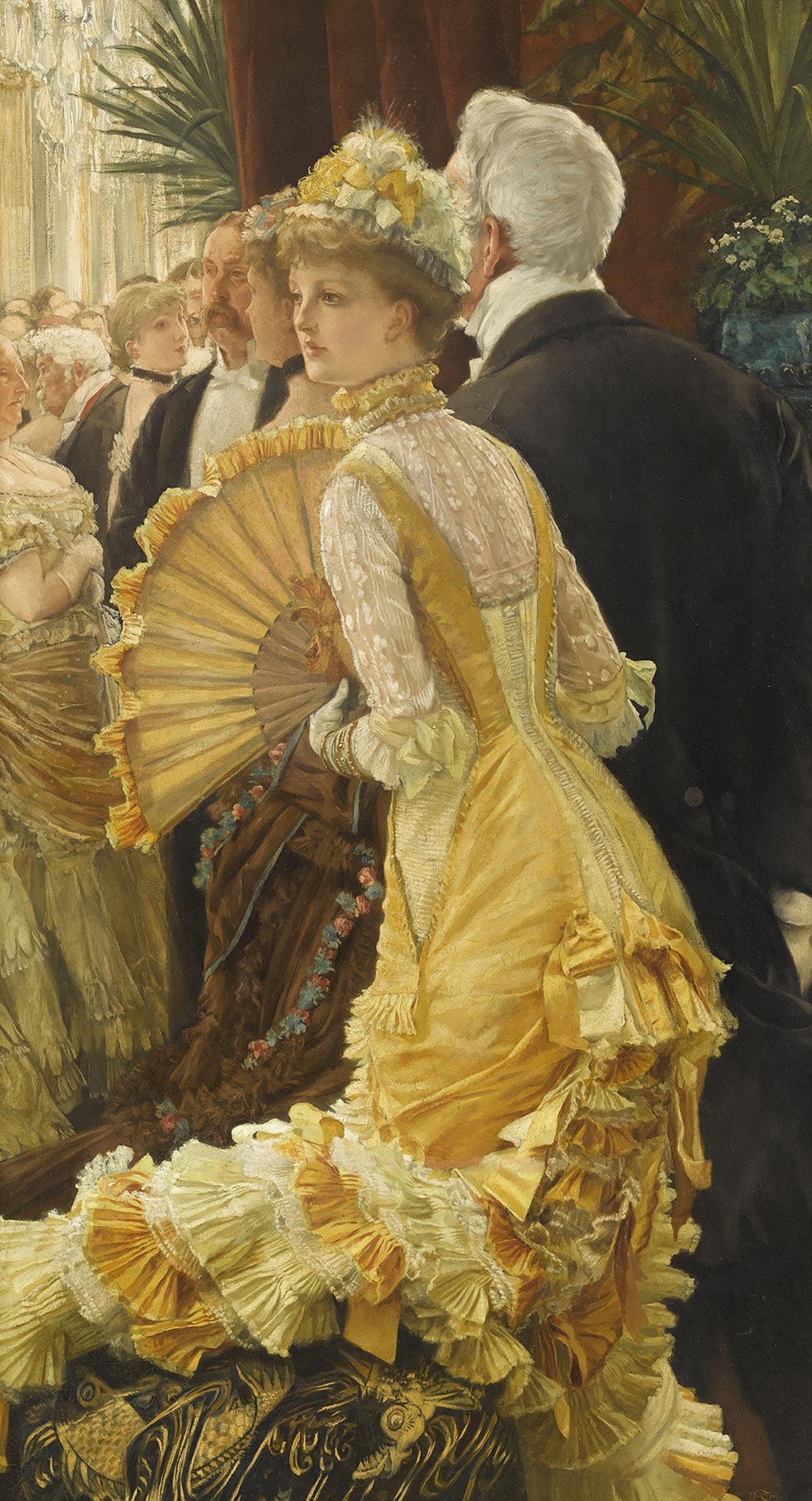
Courtesy: By James Tissot – [1], Public Domain, https://commons.wikimedia.org/w/index.php?curid=2562422
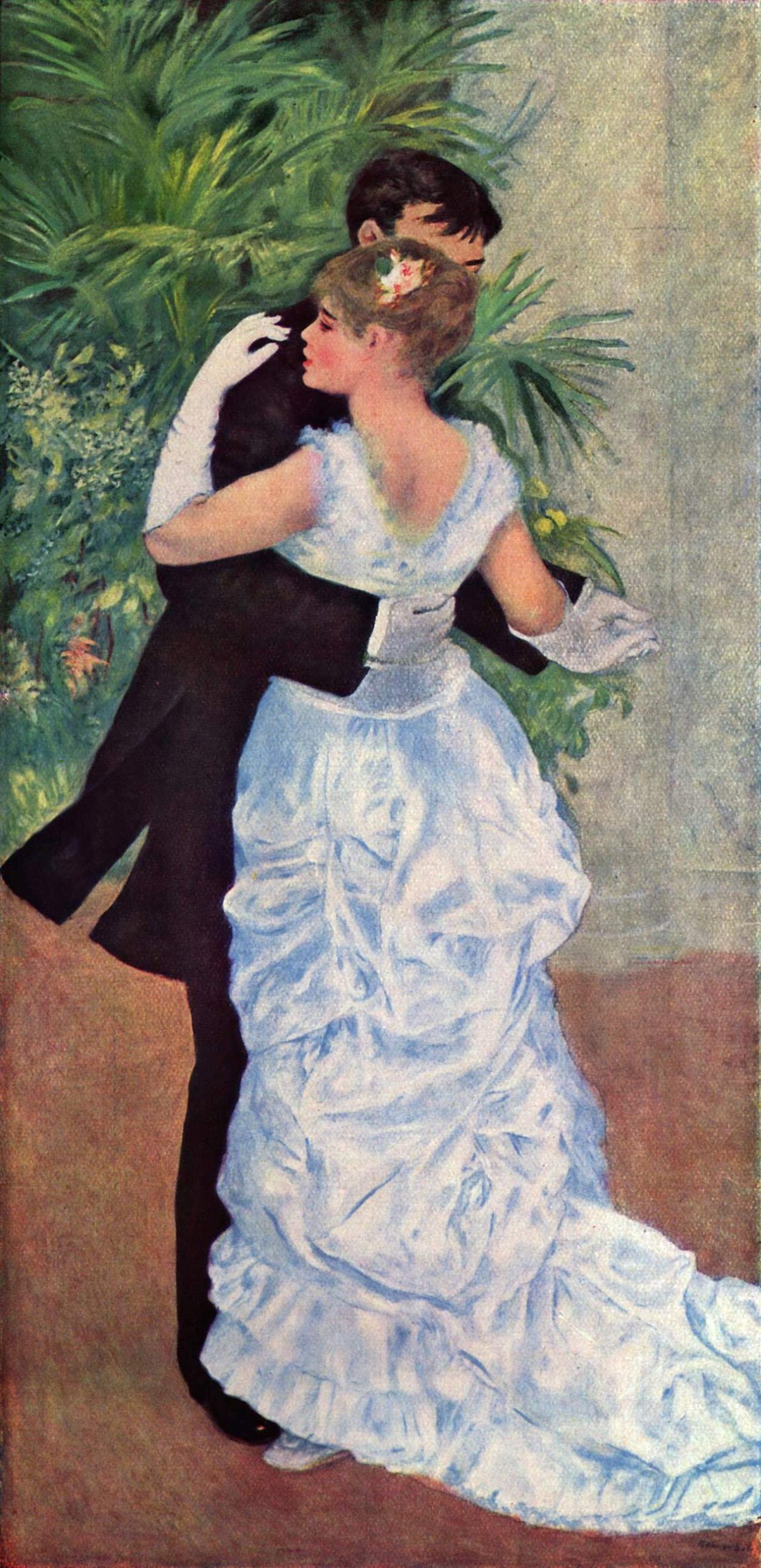
Courtesy: By Pierre-Auguste Renoir – The Yorck Project (2002) 10.000 Meisterwerke der Malerei (DVD-ROM), distributed by DIRECTMEDIA Publishing GmbH. ISBN: 3936122202., Public Domain, https://commons.wikimedia.org/w/index.php?curid=158034
Excerpt from “The Diamond Necklace”
The night of the ball arrived. Madame Loisel was a great success. She was prettier than any other woman present, elegant, graceful, smiling and wild with joy. All the men looked at her, asked her name, sought to be introduced. All the attaches of the Cabinet wished to waltz with her. She was remarked by the minister himself.
She danced with rapture, with passion, intoxicated by pleasure, forgetting all in the triumph of her beauty, in the glory of her success, in a sort of cloud of happiness comprised of all this homage, admiration, these awakened desires and of that sense of triumph which is so sweet to woman’s heart.
She left the ball about four o’clock in the morning. Her husband had been sleeping since midnight in a little deserted anteroom with three other gentlemen whose wives were enjoying the ball.
He threw over her shoulders the wraps he had brought, the modest wraps of common life, the poverty of which contrasted with the elegance of the ball dress. She felt this and wished to escape so as not to be remarked by the other women, who were enveloping themselves in costly furs.
Loisel held her back, saying: “Wait a bit. You will catch cold outside. I will call a cab.”
But she did not listen to him and rapidly descended the stairs. When they reached the street they could not find a carriage and began to look for one, shouting after the cabmen passing at a distance.
They went toward the Seine in despair, shivering with cold. At last they found on the quay one of those ancient night cabs which, as though they were ashamed to show their shabbiness during the day, are never seen round Paris until after dark.
It took them to their dwelling in the Rue des Martyrs, and sadly they mounted the stairs to their flat. All was ended for her. As to him, he reflected that he must be at the ministry at ten o’clock that morning.
She removed her wraps before the glass so as to see herself once more in all her glory. But suddenly she uttered a cry. She no longer had the necklace around her neck! (De Maupassant, 1884).
To read more short stories by Guy de Maupassant, please open the links here and here.
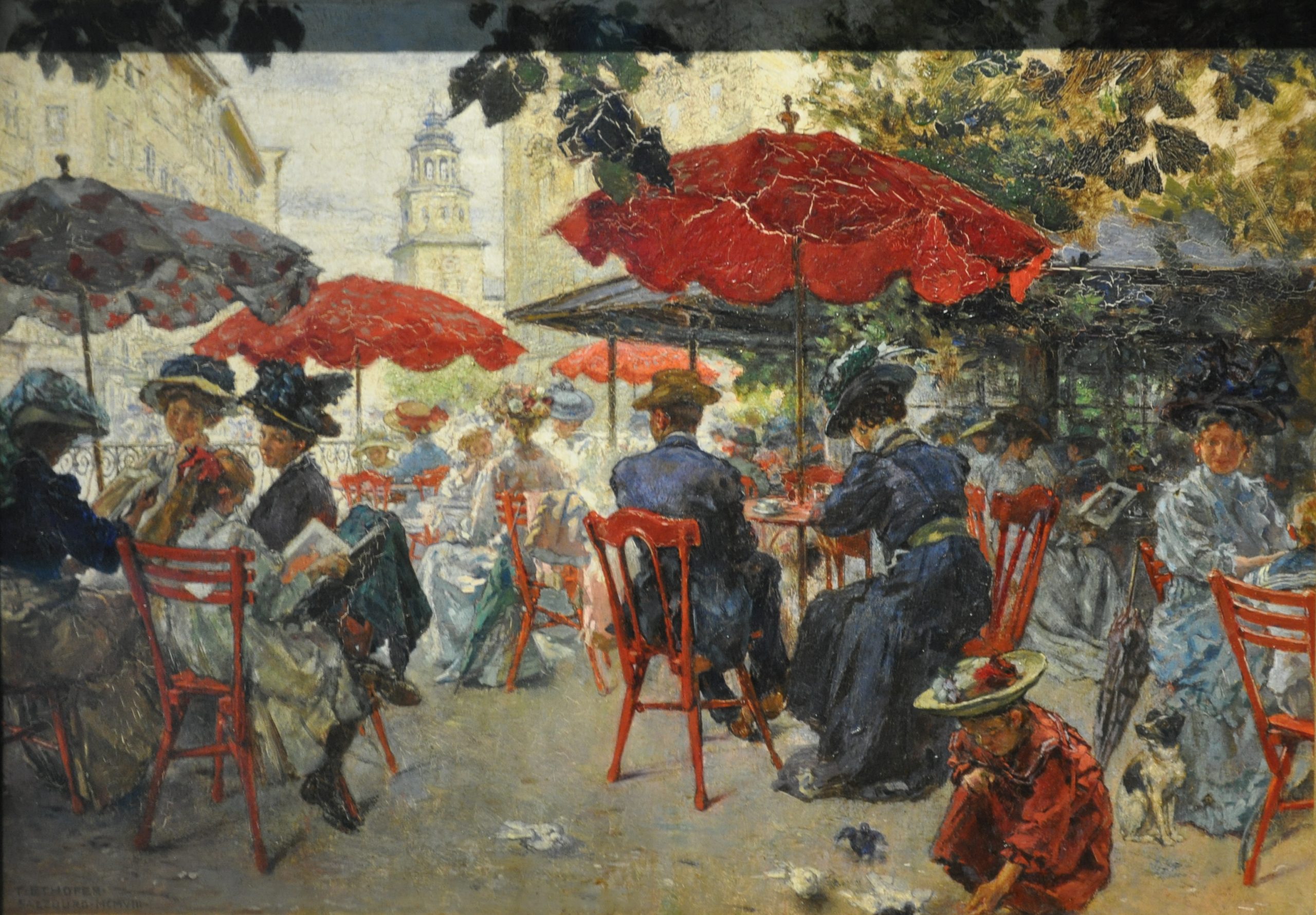 Theodor Ethofer (1849-1915). The Tomaselli Kiosk in Salzburg (1908). Salzburg Museum, Salzburg, Austria. Public Domain.
Theodor Ethofer (1849-1915). The Tomaselli Kiosk in Salzburg (1908). Salzburg Museum, Salzburg, Austria. Public Domain.
Courtesy: By Theodor Josef Ethofer – Own work, WolfD59, 2013, Public Domain, https://commons.wikimedia.org/w/index.php?curid=26242904
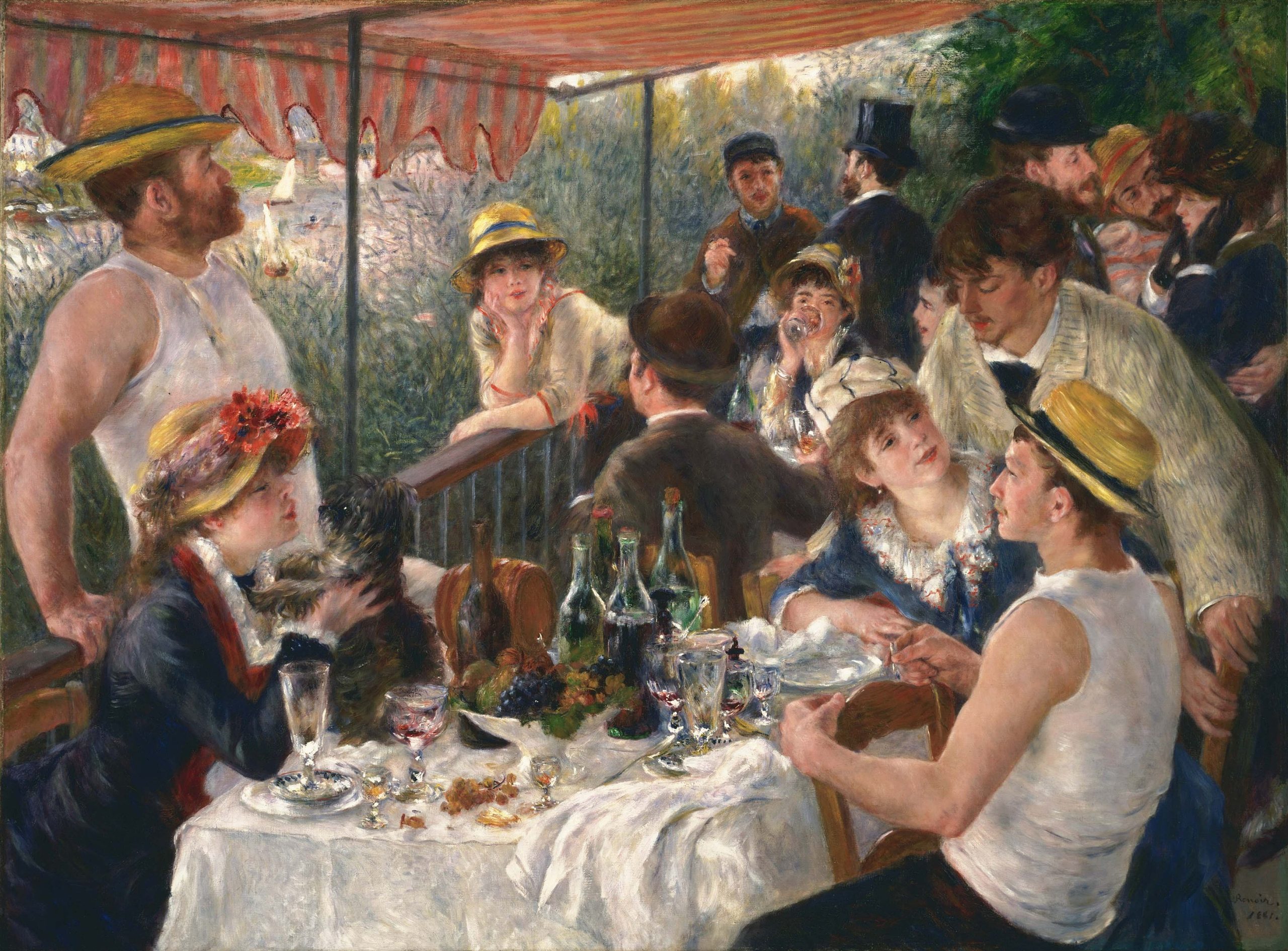
Courtesy: By Pierre-Auguste Renoir – mgHsTKDNJVzPAg at Google Cultural Institute maximum zoom level, Public Domain, https://commons.wikimedia.org/w/index.php?curid=23598834
For the complete short story “The Diamond Necklace” please go to:
https://faculty.ksu.edu.sa/sites/default/files/the_diamond_necklace.pdf
Lesson Plan Ideas:
Additional Resources
Excerpt from “The Rich Boy” by F. Scott Fitzgerald
“Let me tell you about the very rich. They are different from you and me. They possess and enjoy early, and it does something to them, makes them soft where we are hard, and cynical where we are trustful, in a way that, unless you were born rich, it is very difficult to understand. They think, keep in their hearts, that they are better than we are because we had to discover the compensations and refuges of life for ourselves. Even when they enter deep into our world or wink below us, they still think that they are better than we are. They are different. They only way that I can describe young Anson Hunter is to approach him as if he were a foreigner and cling stubbornly to my point of view. If I accept his for a moment I am lost—I have nothing to show by a preposterous movie” (“The Rich Boy,” p. 1, Project Gutenberg Australia).
To access teaching resources for F. Scott Fitzgerald’s work, please open the link here.
Excerpts from “The Jewels” by Guy de Maupassant (1850-1893) and Selected Art Images,
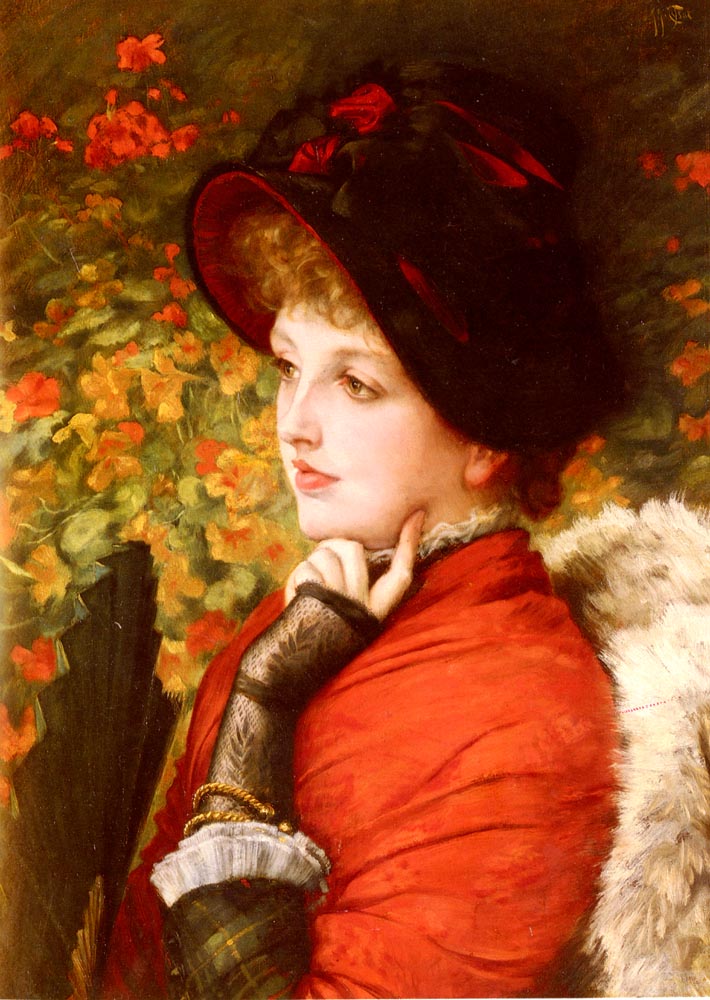
Courtesy: By James Tissot – www.jamestissot.org, Public Domain, https://commons.wikimedia.org/w/index.php?curid=7360868
The One-Sided Nature of Love: An Excerpt from “The False Gems” by Guy de Maupassant.
The One-Sided Nature of Love: An Excerpt from “The False Gems” by Guy de Maupassant.
M. Lantin had met the young woman at a soiree, at the home of the assistant chief of his bureau, and at first sight had fallen madly in love with her.
She was the daughter of a country physician who had died some months previously. She had come to live in Paris, with her mother, who visited much among her acquaintances, in the hope of making a favorable marriage for her daughter. They were poor and honest, quiet and unaffected.
The young girl was a perfect type of the virtuous woman whom every sensible young man dreams of one day winning for life. Her simple beauty had the charm of angelic modesty, and the imperceptible smile which constantly hovered about her lips seemed to be the reflection of a pure and lovely soul. Her praises resounded on every side. People were never tired of saying: “Happy the man who wins her love! He could not find a better wife.”
Now M. Lantin enjoyed a snug little income of $700, and, thinking he could safely assume the responsibilities of matrimony, proposed to this model young girl and was accepted.”
He was unspeakably happy with her; she governed his household so cleverly and economically that they seemed to live in luxury. She lavished the most delicate attentions on her husband, coaxed and fondled him, and the charm of her presence was so great that six years after their marriage M. Lantin discovered that he loved his wife even more than during the first days of their honeymoon.” (A selection of writings from the works of Guy de Maupassant)
Additional Source: Collected Works of Guy de Maupassant, translated by Joachim Neugroshel, 2003, p. 153. The Moderen Library. New York.
To read more short stories by Guy de Maupassant, please open the link here.
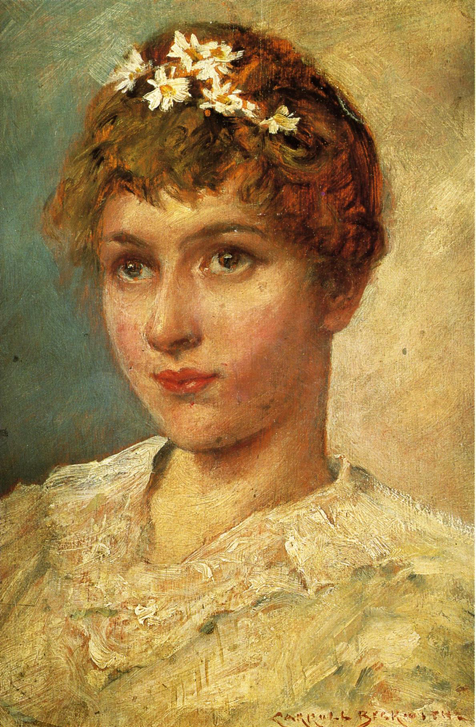
Courtesy: By James Carroll Beckwith – palgraphicsarea.blogspot.coml, Public Domain, https://commons.wikimedia.org/w/index.php?curid=3217850
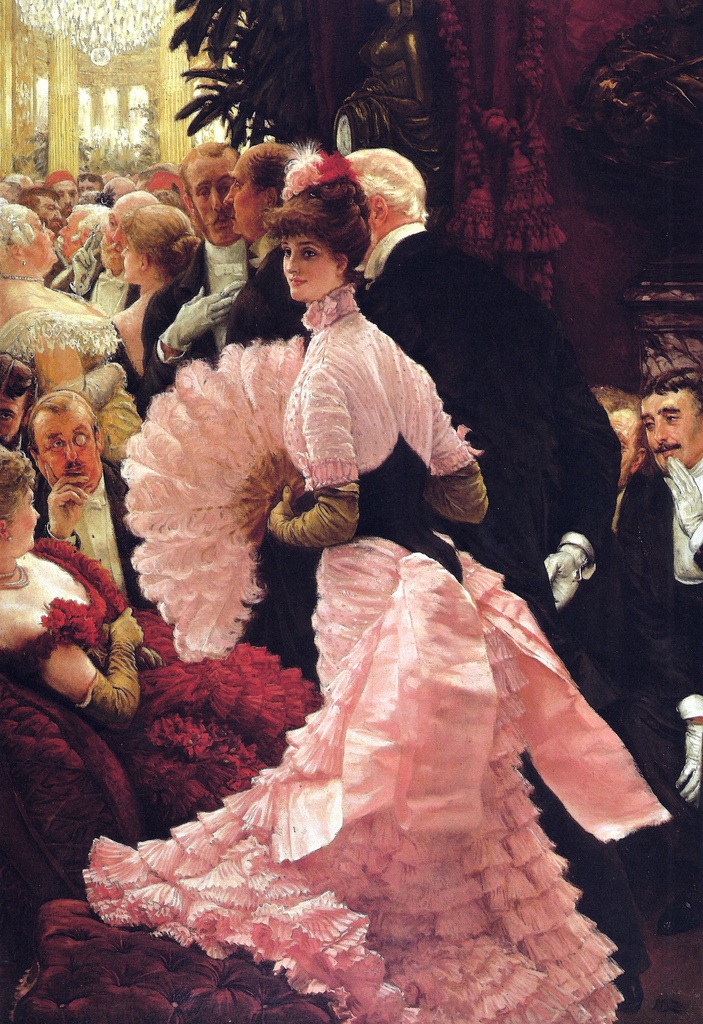
Courtesy: By James Tissot – [1], Public Domain, https://commons.wikimedia.org/w/index.php?curid=2562422
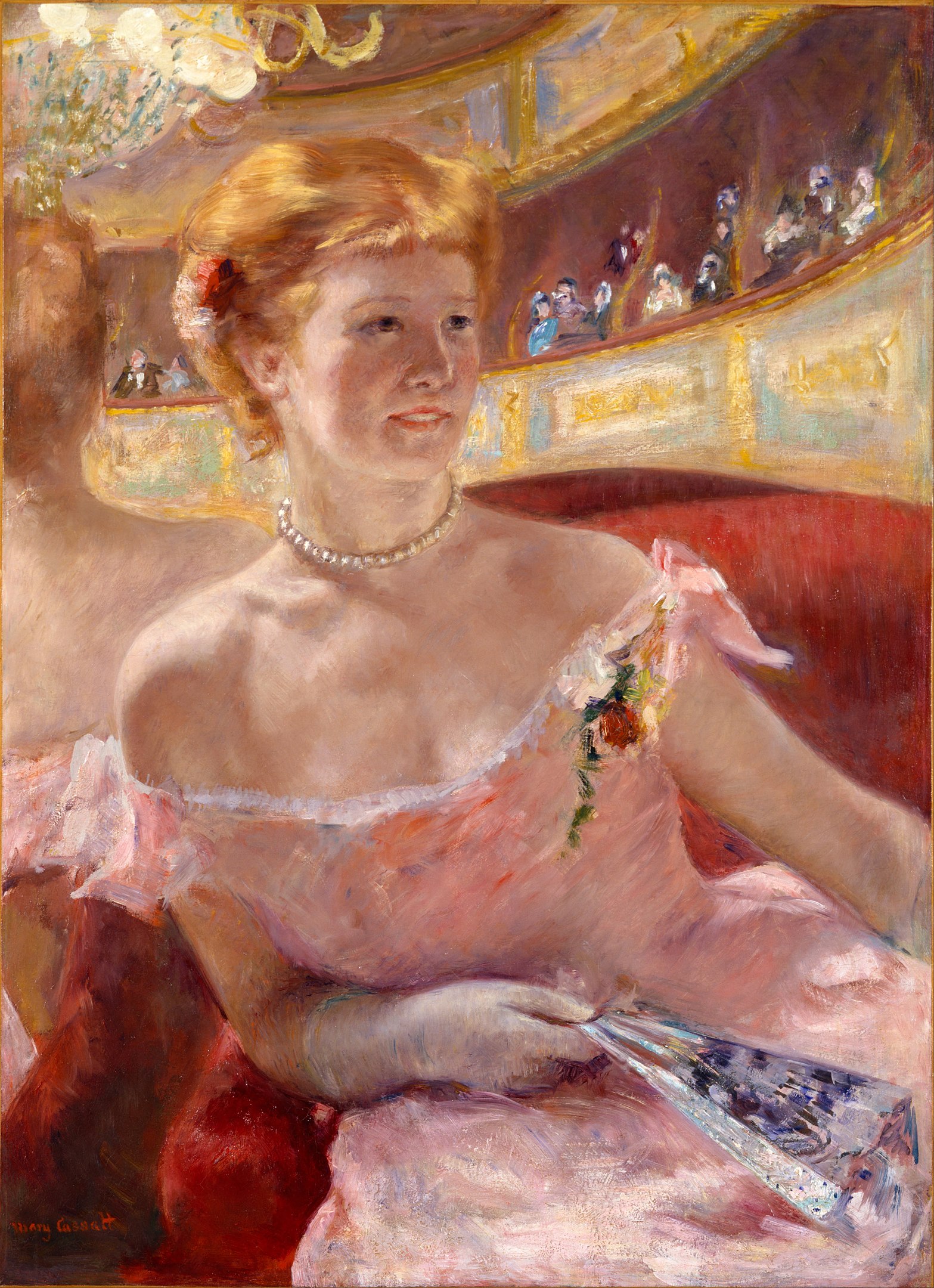
Courtesy: By Mary Stevenson Cassatt, American, 1844 – 1926 (1844 – 1926) – Artist/Maker (American)Born in Alleghney City, Pennsylvania, United States. Died in Le Mesnil-Théribus, France.Google Art Projectでのアーティストの詳細 – twFaMNqHtSxehg at Google Cultural Institute maximum zoom level, Public Domain, https://commons.wikimedia.org/w/index.php?curid=21886285
Excerpt From “The Jewels” by Guy De Maupassant
[Lantin] was unbelievably happy with her. She ran the household so skillfully and so economically that they appeared to be enjoying a life of luxury. There was no attention, no delicacy, no refinement that he didn’t shower her husband with, and she was so seductive that even six years after their first encounter he loved her more than in the beginning.
There were only two things he reproached her for: her love of the theatre and her love of false gems….
Now because of this love of the theatre, she soon needed to adorn herself. Her wardrobe remained simple, true enough, and always in good taste, though modest; indeed, her gentle grace—her humble and sunny, her irresistible grace—seemed to acquire a new charm from the simplicity of her gowns. However, she got into the habit of wearing two big rhinestone eardrops—which glittered like diamonds—plus fake-pearl necklaces, pinchback bracelets, and combs studded with varied beads that looked like semi-precious stones (De Maupassant, 1884, p. 154).
For the complete short story “The Jewels” (1884) please open the link here.
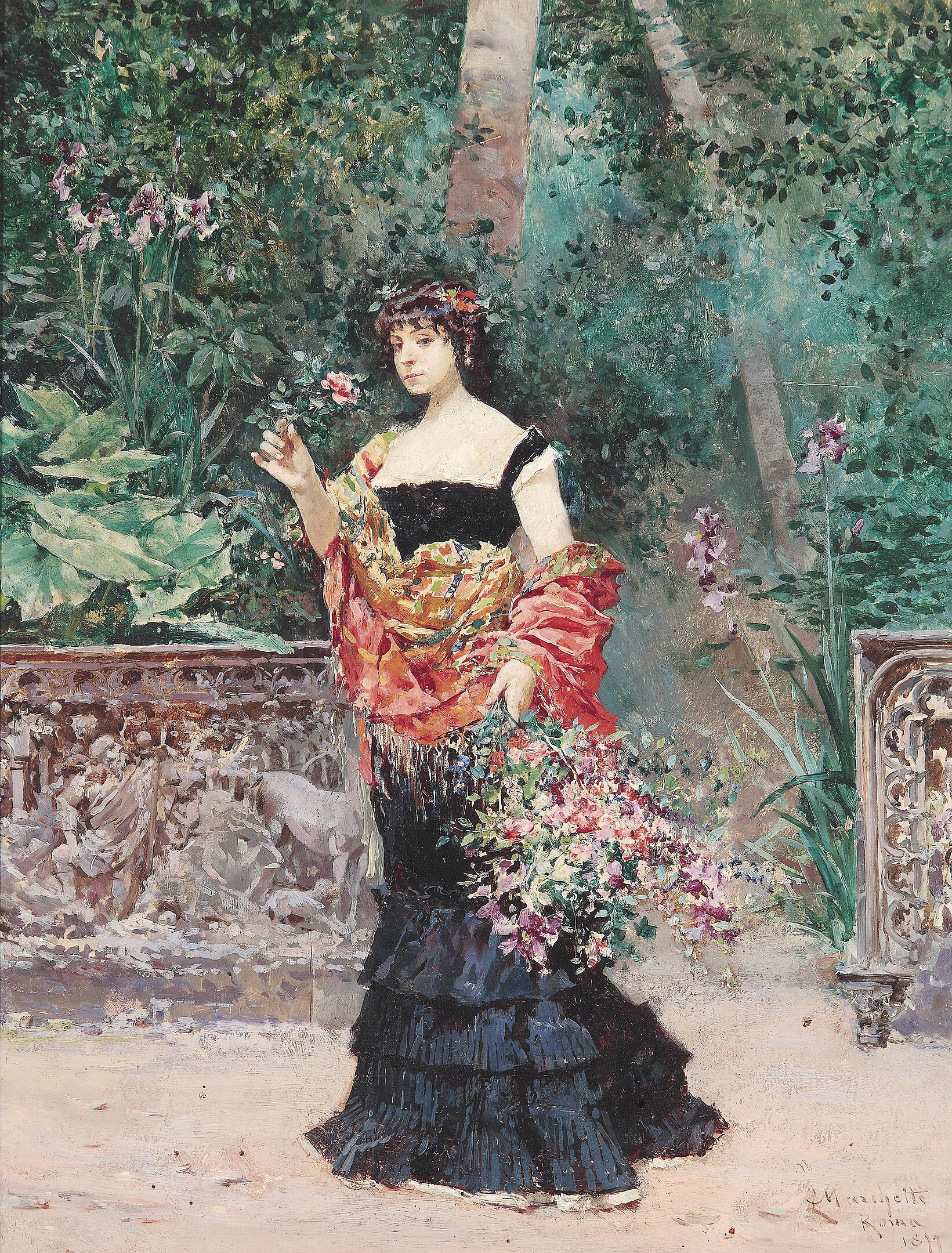
Ludovico Marchetti (1853-1909). Elegant Lady in the Park (1899). Public Domain.
Courtesy: By Ludovico Marchetti (1853-1909) – http://www.dorotheum.com, Public Domain, https://commons.wikimedia.org/w/index.php?curid=16052740
Excerpt from “Vain Beauty” (“Useless Beauty”) by Guy de Maupassant.
The Countess de Mascaret came down just as her husband, who was coming home, appeared in the carriage entrance. He stopped for a few moments to look at his wife and grew rather pale.
She looked very beautiful, graceful, and distinguished looking, with her long oval face, her complexion like gilt ivory, her large gray eyes, ad her black hair; and, she got into her carriage without looking at him, without even seeming to have noticed him with such a particularly high-bred air, that the furious jealousy by which he had been devoured for so long again gnawed at his heart.
He went up to her and said:
“You are going for a drive?”
She merely replied disdainfully:
“You see I am!”
“In the Bois de Boulogne?”
“Most probably.”
“The carriage belongs to you.”
“May I come with you?”
(De Maupassant, 1950, p. 15).
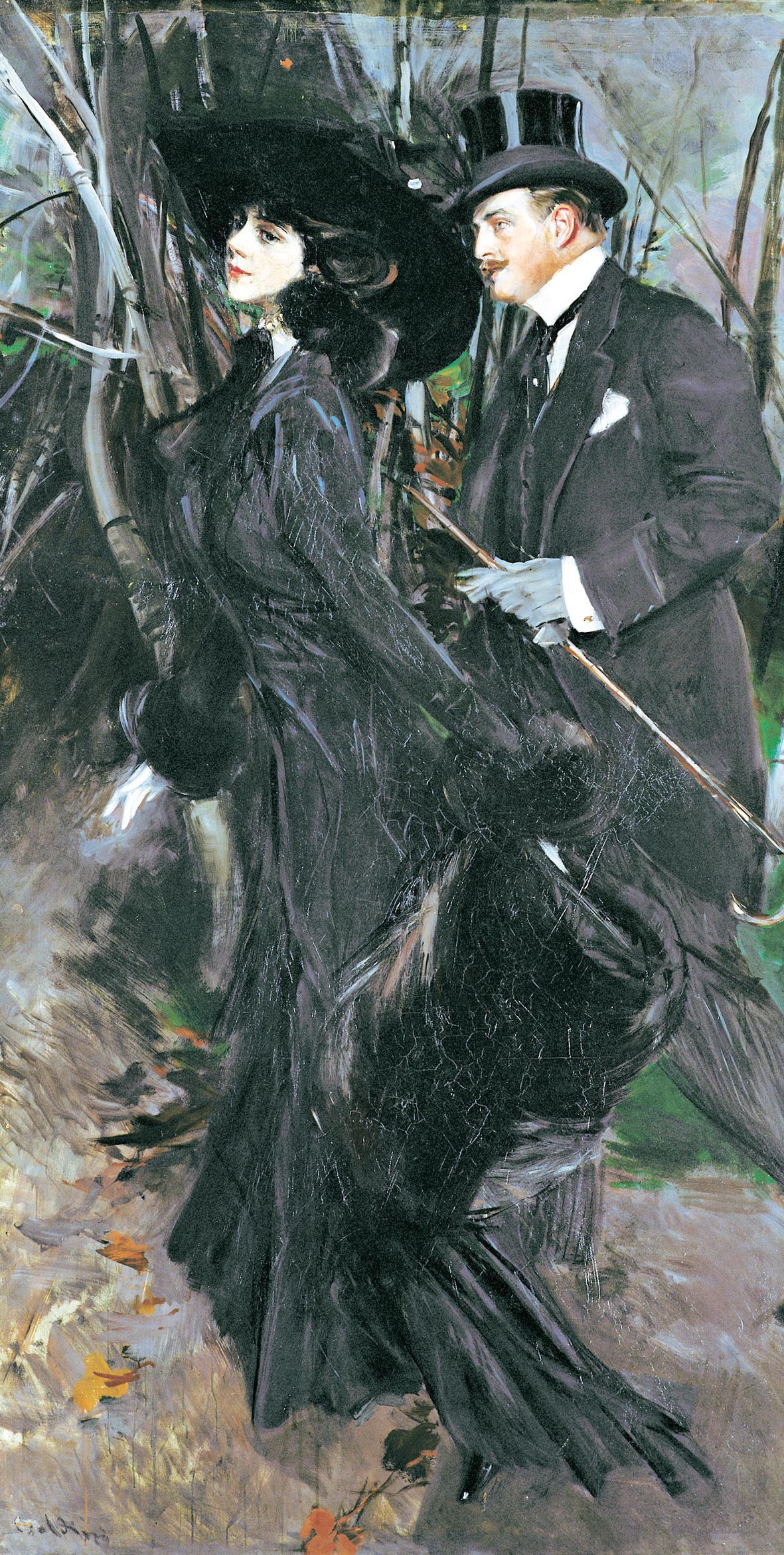
Courtesy: By Giovanni Boldini – [1], Public Domain, https://commons.wikimedia.org/w/index.php?curid=31118992
About the Artist Giovanni Boldini (1842-1941):
The great Italian portrait painter Giovanni Boldini was a favoured artist of European high society. The ornate and flamboyant “swish” style that typify his paintings of fashionable and “aristocratic” women were considered very provocative and daring for the time. His paintings reflected the dynamic elegance of the “fin-de-siècle” style of 19th century Parisian society. Actresses, dancers, and the “grand-doyennes” of Parisian society sought Boldini out for his artistic talent; a portrait by the artist was considered notable achievement for the season. Boldini’s paintings seem to capture the ambience and elegance of Maupassant’s Parisian world.
Additional Resources
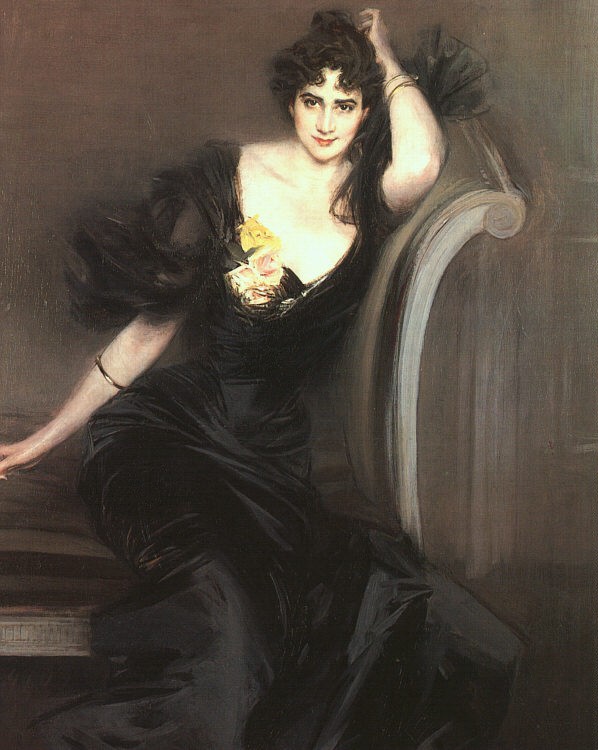
Courtesy: By Giovanni Boldini – http://sunsite.icm.edu.pl/cjackson/b/p-boldini2.htm, Public Domain, https://commons.wikimedia.org/w/index.php?curid=3776554
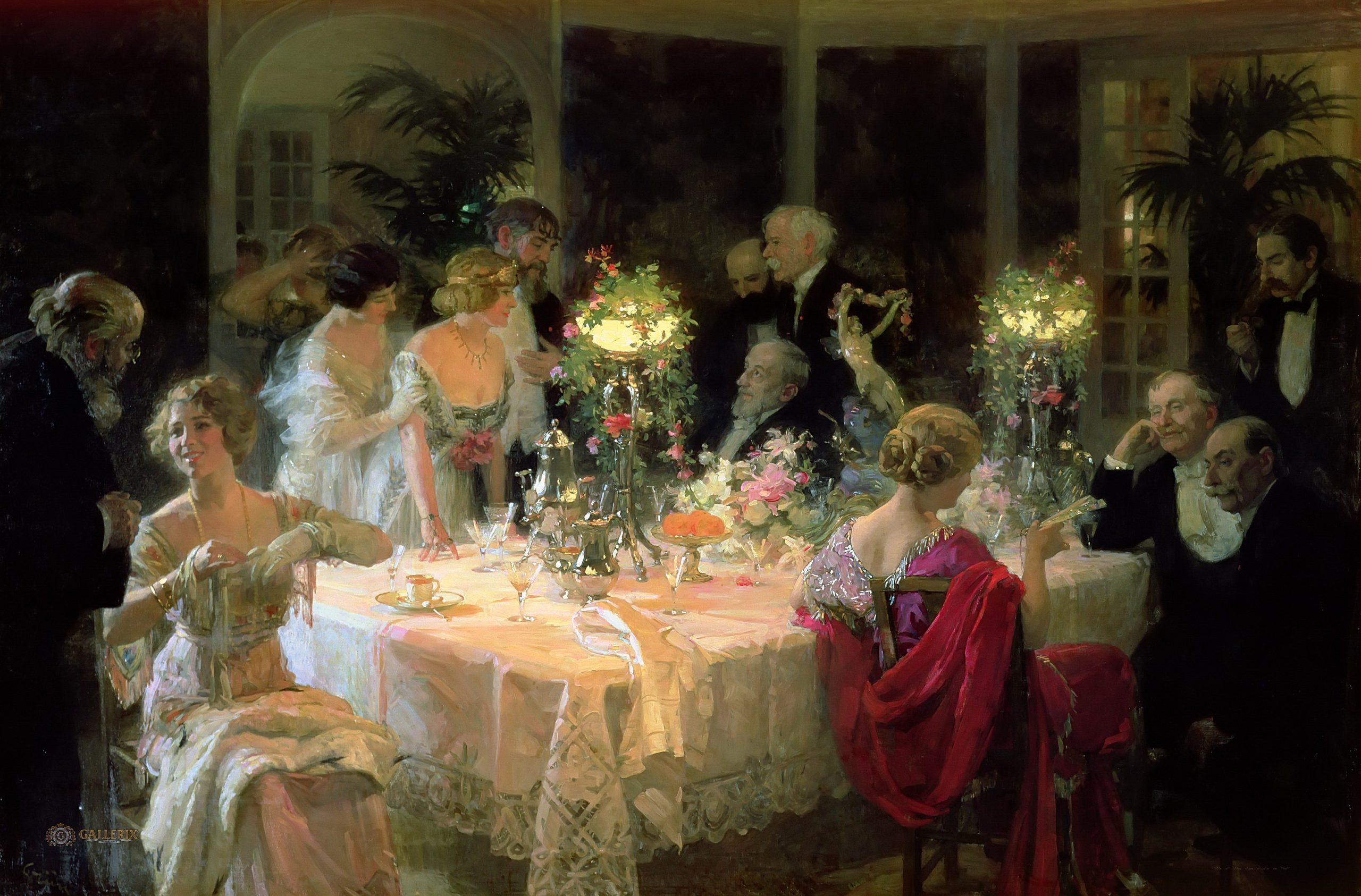
Courtesy: By Jules-Alexandre Grün (1868 – 1934) – http://www.reprodart.com/a/grun-jules-alexandre/the-end-of-dinner-1.html, Public Domain, https://commons.wikimedia.org/w/index.php?curid=3408566
Excerpt from “Bliss” by Katherine Mansfield
Although Bertha Young was thirty she still had moments like this when she wanted to run instead of walk, to take dancing steps on and off the pavement, to bowl a hoop, to throw something in the air and catch it again, or to stand still and laugh at—-nothing—at nothing, simply.
What can you do if you are thirty and, turning the corner of your own street, you are overcome, suddenly, by a feeling of bliss—absolute bliss!—as though you’d suddenly swallowed a bright piece of that late afternoon sun and it burned in your bosom, sending out a little shower of sparks into every particle, into every finger and toe?….
They had people coming to dinner. The Norman Knights—a very sound couple—he was about to start a theatre, and she was awfully keen on interior decoration, a young man, Eddie Warren, who had just published a little book of poems and whom everyone was asking to dine and a ‘find’ of Bertha’s called Pearl Fulton What Miss Fulton did, Bertha didn’t know. They had met at the club[…] (1918, p.995)
From The Garden Party and Other Stories by Katherine Mansfield, Constable & Co, 1922.
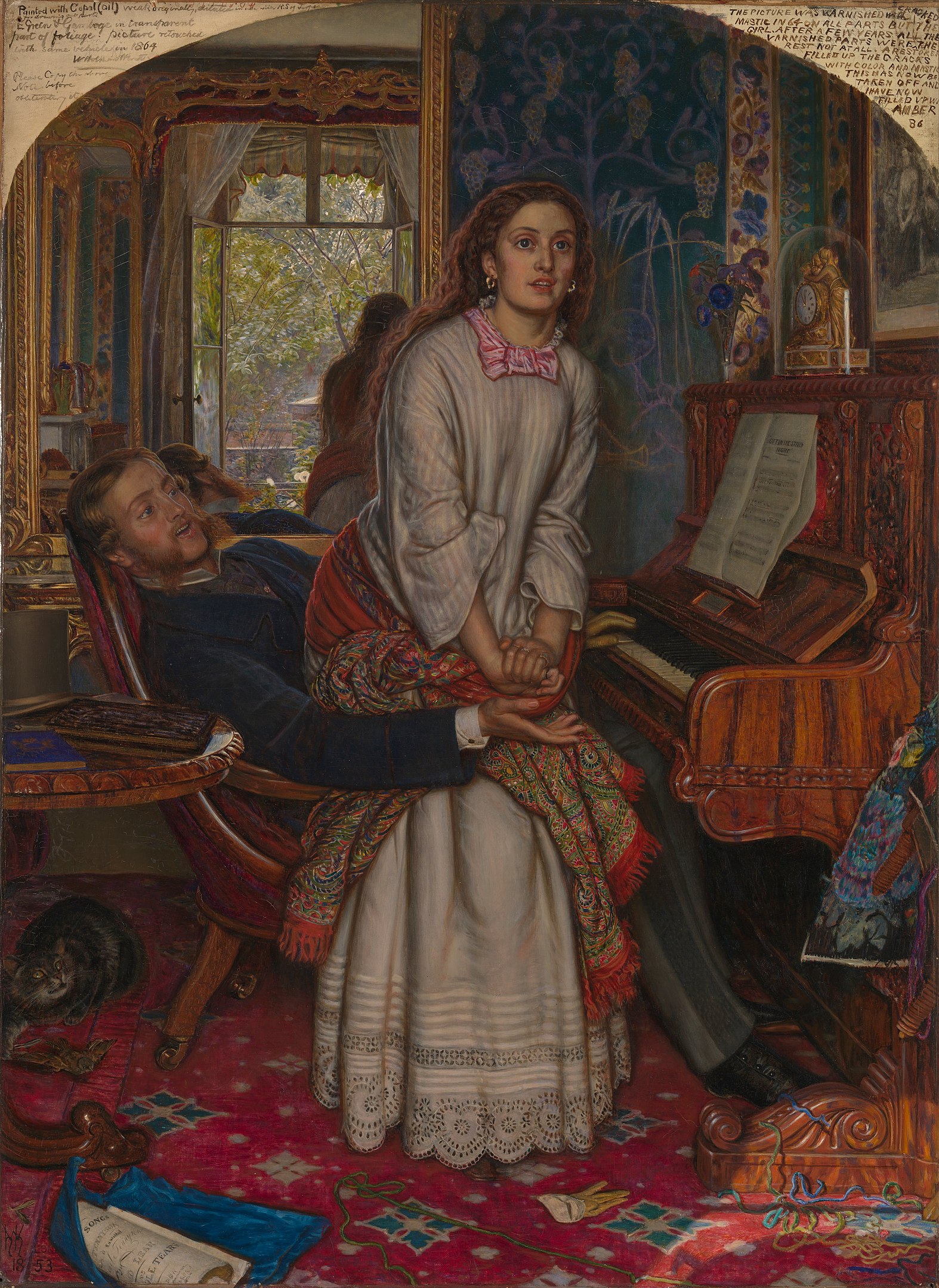
Courtesy: By William Holman Hunt – eAEe8oI1HIMufA — Google Arts & Culture Tate Images (http://www.tate-images.com/results.asp?image=T02075&wwwflag=3&imagepos=1), Public Domain, https://commons.wikimedia.org/w/index.php?curid=13454424
Additional Resources
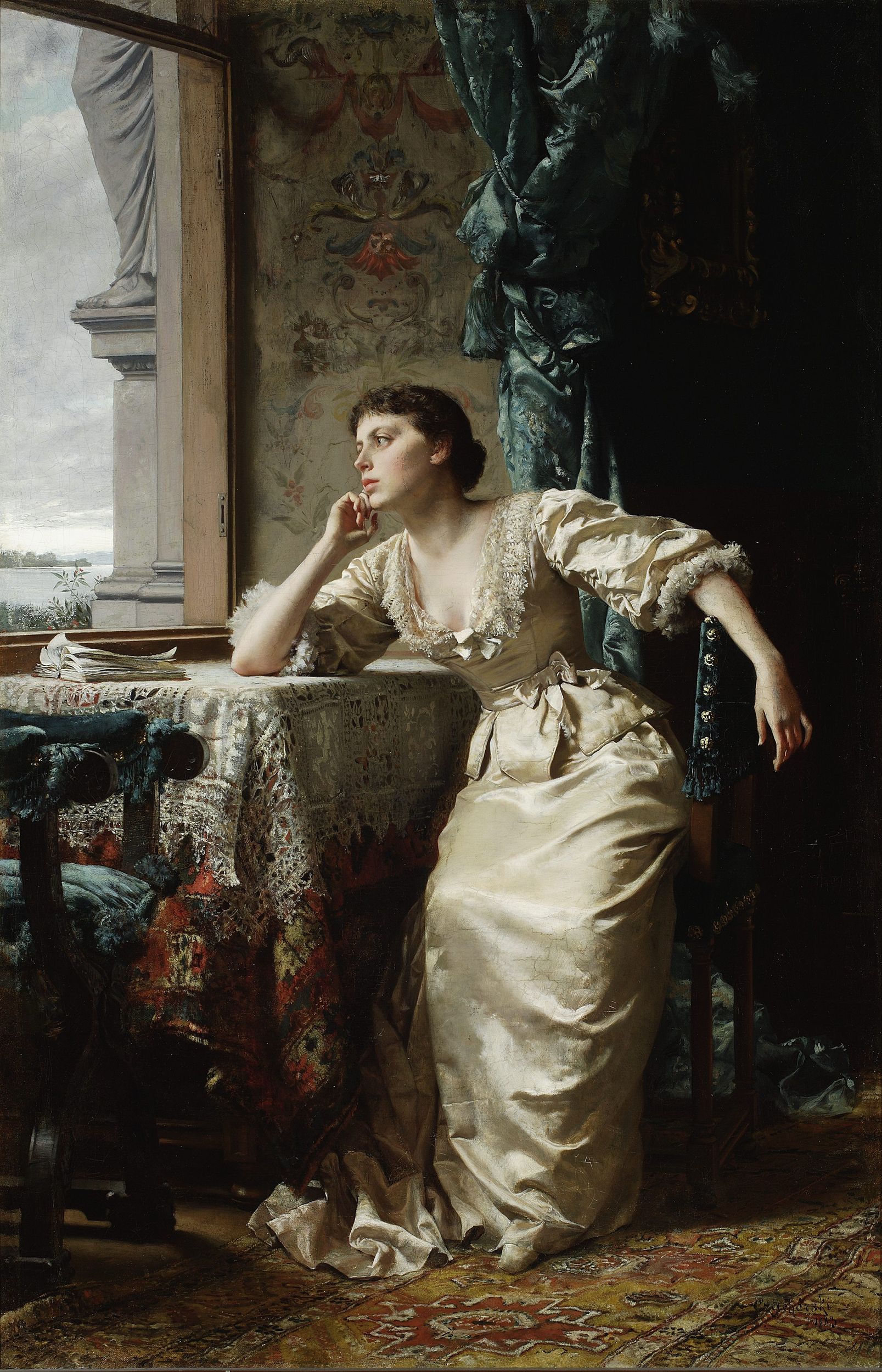
Courtesy: By Władysław Czachórski – National Museum in Warsaw, Public Domain, https://commons.wikimedia.org/w/index.php?curid=98806779
Excerpt from“The Story of an Hour” by Kate Chopin
She was young, with a fair, calm face, whose lines bespoke repression and even a certain strength. But now there was a dull stare in her eyes, whose gaze was fixed away off yonder on one of those patches of blue sky. It was not a glance of reflection, but rather indicated a suspension of intelligent thought.
There was something coming to her and she was waiting for it, fearfully. What was it? She did not know; it was too subtle and elusive to name. But she felt it, creeping out of the sky, reaching toward her through the sounds, the scents, the color that filled the air.
Now her bosom rose and fell tumultuously. She was beginning to recognize this thing that was approaching to possess her, and she was striving to beat it back with her will–as powerless as her two white slender hands would have been. When she abandoned herself a little whispered word escaped her slightly parted lips. She said it over and over under hte breath: “free, free, free!” The vacant stare and the look of terror that had followed it went from her eyes. They stayed keen and bright. Her pulses beat fast, and the coursing blood warmed and relaxed every inch of her body.
She did not stop to ask if it were or were not a monstrous joy that held her. A clear and exalted perception enabled her to dismiss the suggestion as trivial. She knew that she would weep again when she saw the kind, tender hands folded in death; the face that had never looked save with love upon her, fixed and gray and dead. But she saw beyond that bitter moment a long procession of years to come that would belong to her absolutely. And she opened and spread her arms out to them in welcome.
There would be no one to live for during those coming years; she would live for herself. There would be no powerful will bending hers in that blind persistence with which men and women believe they have a right to impose a private will upon a fellow-creature. A kind intention or a cruel intention made the act seem no less a crime as she looked upon it in that brief moment of illumination (1894).

